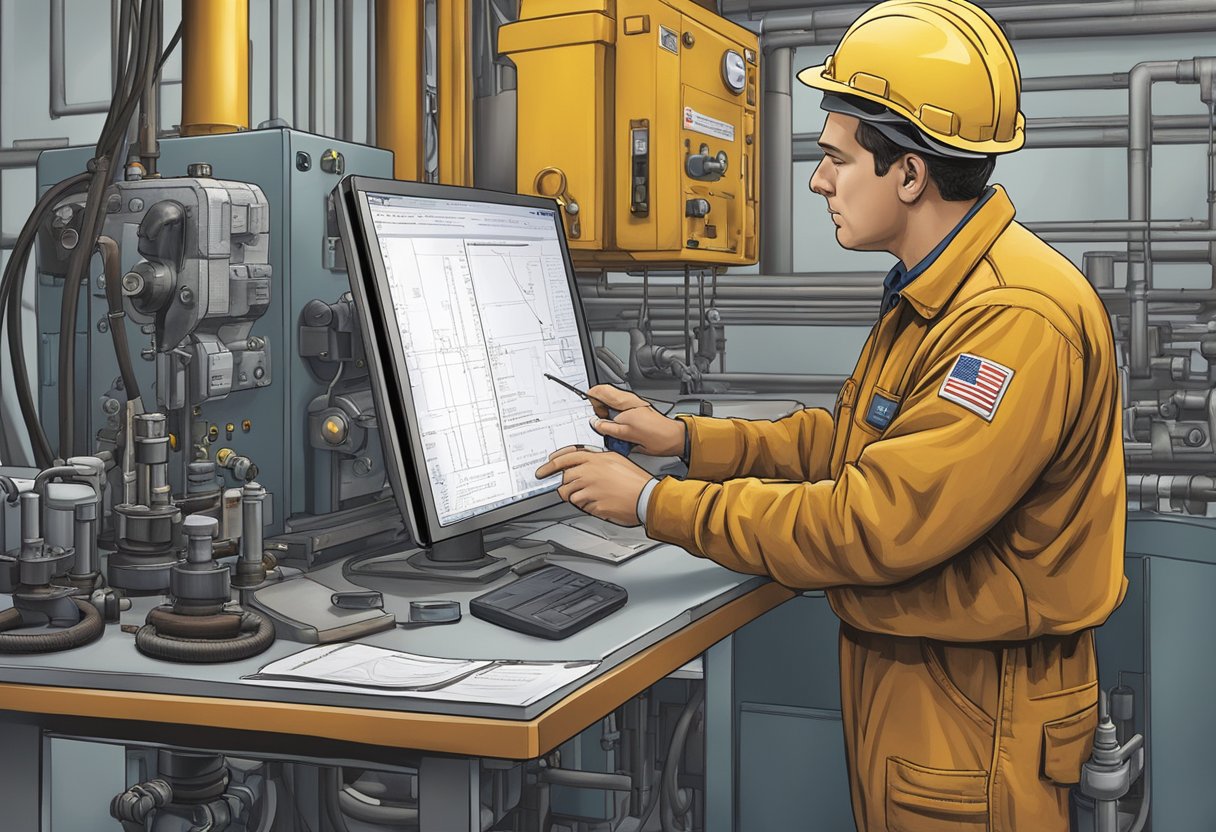Preparing for an oil rig appraisal is a critical task that requires a thorough understanding of the valuation process in the oil and gas industry. An appraisal determines the value of your oil rig and can impact financing options, insurance premiums, and the decision-making process for potential upgrades or sales. Knowing the factors that appraisers consider, such as current market conditions, projected revenues, and operational costs, can help you anticipate their appraisal and ensure a fair and accurate valuation of your asset.
Before the appraisal begins, ensure that all financial records, maintenance logs, and compliance documents are organized and readily accessible. These documents provide crucial data that supports the worth of your oil rig. They reflect the rig’s operational history and profitability, which are key components in its overall value. Additionally, understanding the methodology used by appraisers, often involving discounted cash flow analysis or comparable sales approaches, allows you to better comprehend how your rig’s value is calculated.
It is equally important to be aware of the market trends within the oil and gas industry, as they can significantly influence the outcome of your appraisal. Fluctuating oil prices, advancements in extraction technology, and changes in regulations can all affect the perceived value of your oil rig. Being prepared with this knowledge not only helps you set realistic expectations but also equips you with the information to discuss the appraisal results with confidence.
Understanding Oil Rig Appraisal Basics
When preparing for your oil rig appraisal, it’s essential to familiarize yourself with the terminology and understand the objectives and scope. An accurate appraisal will help determine the fair market value of the oil rig.
Key Appraisal Terminology
- Appraisal: This is the process of estimating the value of an oil rig by a certified professional.
- Valuation: The outcome of the appraisal process that determines the dollar value of the oil rig.
- Fair Market Value: The estimated price at which the property would change hands between a willing buyer and seller.
- Replacement Cost: This reflects the amount required to replace the existing assets with new ones of similar function and efficiency.
- Depreciation: A decrease in the value of the oil rig over time due to wear and tear or obsolescence.
- Obsolescence: Loss of value from all causes within the property itself, which could be functional or economic.
Appraisal Objectives and Scope
- Objectives: To arrive at an unbiased and supported estimate of fair market value consistent with the definition and purpose of the appraisal.
- Scope: The appraisal considers factors like the physical condition of the rig, the current market conditions, the remaining economic life, and the replacement cost, among others.
- Economic Life: An estimate of the period over which the oil rig is expected to be profitably usable.
Note that understanding these core terms and the scope of the appraisal is crucial for gathering the appropriate financial and technical documents ahead of time, ensuring your oil rig appraisal is thorough and reflective of the rig’s current state and potential.
Factors Influencing Oil Rig Values
When preparing your oil rig for appraisal, understanding the factors that significantly affect its value is crucial. These factors range from the physical condition of the rig to market dynamics and technological advancements.
Age and Condition Analysis
Your oil rig’s age is a primary determinant of its value. Typically, the newer the rig, the higher the value due to less exposure to the elements and operational stress. Physical condition is also critical; a well-maintained rig with a history of regular upkeep will retain more value than one showing significant signs of wear and tear.
Evaluating Market Demand and Oil Prices
The market demand for oil rigs is influenced by current oil prices, which fluctuate based on global economic conditions. High oil prices can increase the demand for rigs, thereby boosting their value. Stay updated with market trends to gauge how demand may affect your rig’s appraisal.
- Current Oil Prices: $XX/barrel
- Projected Demand: High/Moderate/Low
Assessment of Wear and Tear
Wear and tear can significantly impact your rig’s value. During an appraisal, inspectors will meticulously examine the rig for signs of deterioration. Regular maintenance minimizes depreciation and can slow down the depreciation rate. Keep detailed records of maintenance to underscore your rig’s upkeep.
| Maintenance Aspect | Condition | Impact on Value |
|---|---|---|
| Hull Integrity | Good/Fair/Poor | High/Moderate/Low |
| Drilling Equipment | Good/Fair/Poor | High/Moderate/Low |
| Living Quarters | Good/Fair/Poor | High/Moderate/Low |
Impact of Technology on Value
In the oil industry, technology is a game-changer. Rigs equipped with the latest technological advancements are more efficient and safer, which increases their value. Assess how your rig’s technology stands relative to current industry standards, as this can be a strong selling point during appraisal.
- Technological Features: List of features
- Comparison to Industry Standards: Above/Below/At Par
Practical Aspects of Appraising Oil Rigs
Accurate appraisals are critical to understanding the value and operational capabilities of an oil rig. This section will guide you through essential steps to assess the value, condition, and performance of drilling machinery and equipment.
The Appraisal Process
When you embark on an oil rig appraisal, you begin with compiling a detailed inventory of the rig’s assets. You want to verify all documentation, including deeds, titles, and previous appraisal reports. Obtain a thorough understanding of the rig’s operational history, which includes looking into production records and maintenance logs.
Next, inspect the physical condition of the rig. This involves a visit to the site to review the equipment and infrastructure firsthand. You’re not just looking at the machinery—you’re evaluating signs of wear and tear and matching the physical state to the documents you’ve reviewed.
Comprehensive appraisal services employ methodologies that draw from standardized industry practices. They often work with a combination of cost, market, and income approaches to derive a fair value.
Equipment and Machinery Valuation
Focus on the core drilling equipment when assessing machinery value. The valuation should address each component’s condition, age, and expected lifespan. This can be portrayed in a table:
| Equipment Item | Age | Condition | Expected Lifespan |
|---|---|---|---|
| Top Drive System | 8 Years | Good | 15 Years |
| Mud Pumps | 5 Years | Fair | 12 Years |
| Derrick | 10 Years | Excellent | 20 Years |
For machinery that’s unique to the drilling industry, such as blowout preventers or mud systems, enlist specialized appraisal services. They should have the expertise to provide accurate estimates. Their assessment should inform you of not only the current market value but also potential future maintenance or replacement costs.
Understanding Replacement and Repair Costs
Replacement and repair are significant factors in oil rig valuation. You should identify the costs associated with both the immediate and longer-term replacement of key machinery components.
For each major component, estimate the repair costs based on current market rates. Here’s an illustrative example:
- Blowout Preventer:
- Repair Cost: $15,000
- Replacement Cost: $250,000
- Drill Pipe:
- Repair Cost (per joint): $500
- Replacement Cost (per joint): $2,500
Understanding these costs helps in grasping the total lifecycle expenses of the rig and can affect operational budgeting decisions. Be mindful that the costs can vary widely depending on factors like market demand, material prices, and technology advancements.
Utilizing Appraisal Results
The results from your oil rig appraisal can impact critical aspects of your operations. They provide a strategic advantage for financial and market positioning, ensuring that you make informed decisions based on the valuation of your equipment.
Decisions for Buying or Selling Rigs
When considering the sale or purchase of oil rigs, it’s essential to rely on accurate appraisal results. These results determine your rig’s market value, allowing you to set competitive prices. For buyers, appraisals help assess whether a rig is a worthy investment. The global market demands precise valuation for these decisions to protect and enhance the financial health of your energy company.
- Sale Decisions: Use appraisal reports to support your asking price with justifiable evidence.
- Buy Decisions: Gauge potential returns on investment by comparing the appraised value against the asking price.
Insurance and Financing Considerations
Appraisal results are critical for insurance and financing activities. They provide insurers with a clear assessment of your rig’s value for accurate coverage. In terms of financing, lenders require a thorough understanding of your rig’s worth before they can approve loans or credit lines.
- Insurance Purposes: Ensure you have sufficient coverage by declaring the true value of your equipment.
- Financing Activities: Strengthen your negotiating position with lenders with substantiated equipment values.
Strategic Planning and Risk Management
Appraisals inform your strategic planning by offering visibility into the current state and potential future trajectory of your assets. Adjust your risk management strategies to accommodate the fluctuations in the valuation of your rigs. This foresight can prove beneficial in mitigating risks associated with the volatile nature of the energy sector.
- Planning: Align your business objectives with the real value of your rigs.
- Risk Mitigation: Adapt your operations to market changes by understanding valuation trends.
Frequently Asked Questions
Before embarking on an appraisal for your oil rig, it’s crucial you understand the evaluation process and the industry standards.
What criteria are used to determine the overall value of an oil rig?
The overall value of an oil rig is determined by several factors including its current condition, production rate, remaining reserves, operational efficiency, and compliance with safety and environmental regulations.
How often should oil rigs undergo maintenance checks to ensure they pass appraisals?
Oil rigs should undergo regular maintenance checks as per industry standards and manufacturer recommendations. Typically, these checks are annual, but more frequent inspections may be required for critical equipment or if operational issues are identified.
What safety protocols must be in place for an oil rig to pass its inspection and appraisal process?
An oil rig must adhere to stringent safety protocols including regular safety drills, proper functioning of safety equipment, adherence to operational controls, and compliance with both international and national standards for health, safety, and environment (HSE) to pass its inspection and appraisal process.

